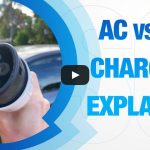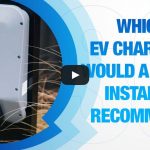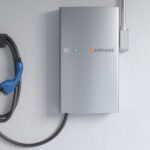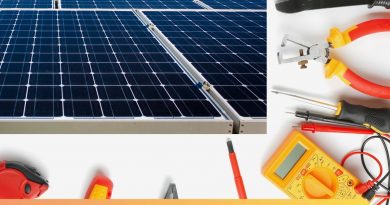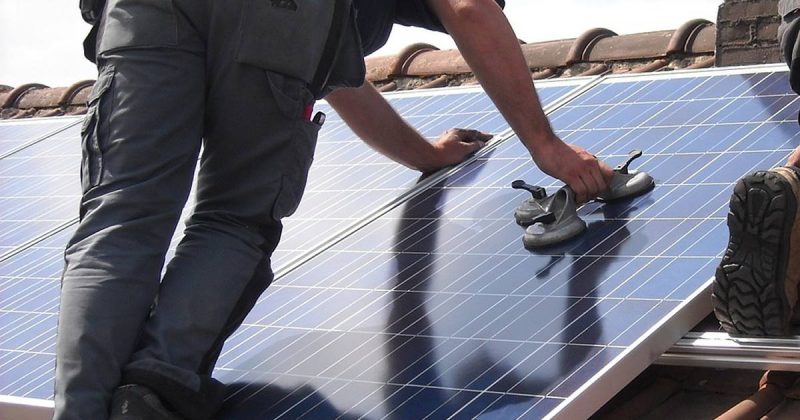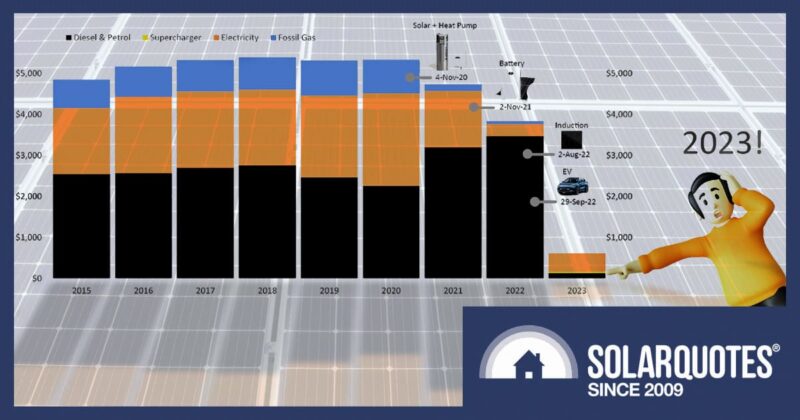Home EV Charging For Tightarses (Like Me)
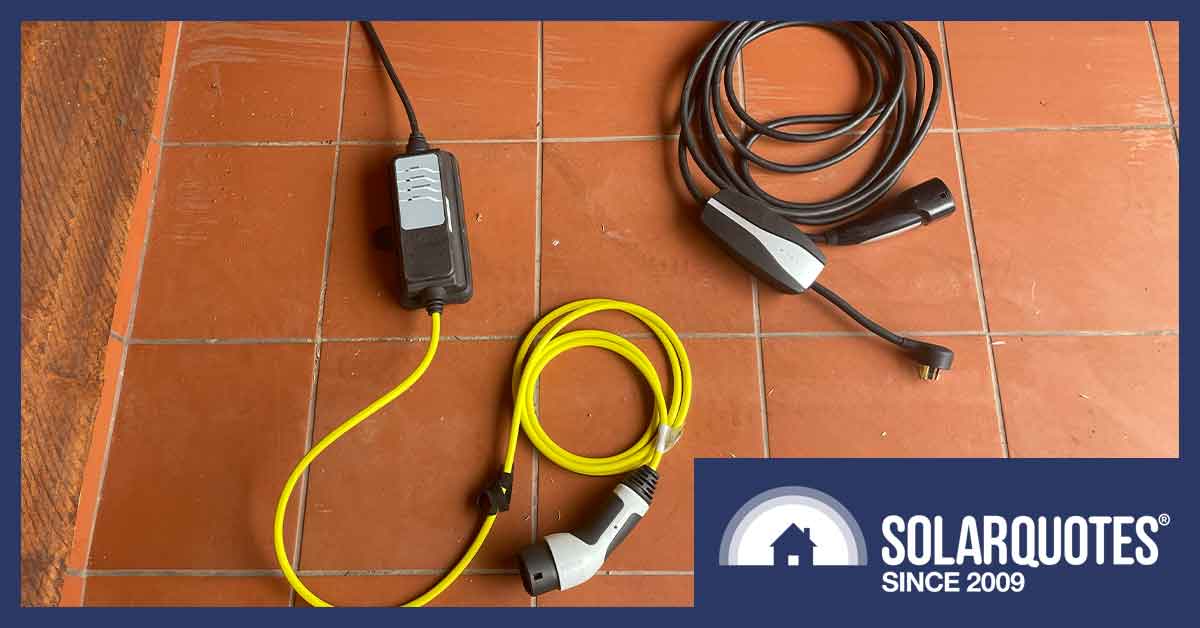
Tricks and traps when charging from a standard powerpoint.
Spent all your spare cash on an electric car and don’t want to incur the expense of a hard-wired home EV charger? Then this is the post for you.
For five years, my two EVs have only ever been plugged into a powerpoint.
My Australian-delivered 2015 Outlander PHEV doesn’t have a fast DC charging port and Irene the iMiev has never needed a fast charge, so they’ve only ever had a diet of general purpose electrons from general purpose outlets or GPOs, as we’ll refer to them.
And as for extension cords, my lived experience as a licensed electrician is that it can be done despite what the manufacturer’s instructions say. But like anything electrical, you need to be observant and try not to push your luck because I’ve been doing that for you, dear reader.
Don’t I Need A Wall Mounted EV Charger Installed For $1500+?
If you only travel a modest mileage or have a small battery, then no – you don’t need a hard-wired EV charger.
All electric vehicles (except recent Teslas) and PHEVs come with what is variously described as an EVSE, mobile connector, slow charger, brick or granny charger. Think of it as part of the tool kit in the boot, but more useful than the dodgy pliers, jack and wheel brace for the spare wheel they probably didn’t give you anyway.
In Australia, they come in two flavours. One has a nominal 10 amp plug that like any other appliance plugs into any general power outlet. The other has a 15 amp plug, which you’ll be familiar with if you have a decent-sized welder, air compressor, urn, bain marie or caravan. The 15A plug has a wider earth pin that won’t fit in a 10A socket.
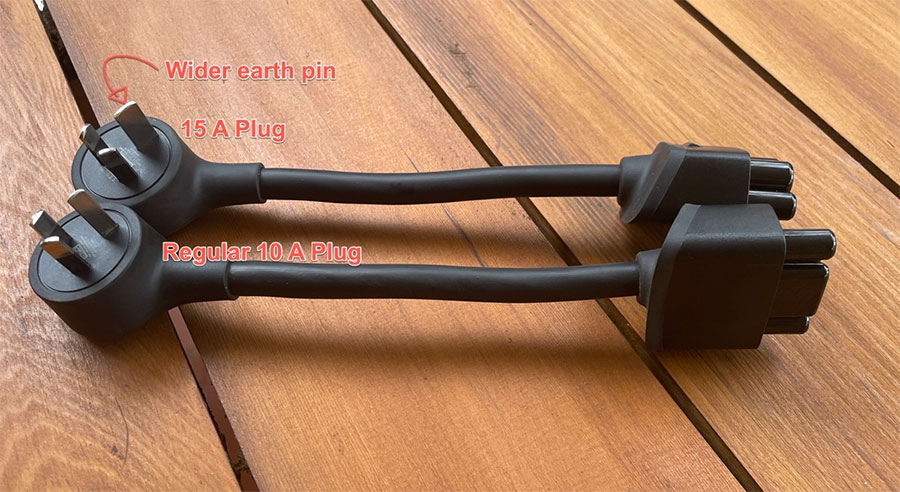
The 10A and 15A ‘tails’ from a Tesla mobile connector. The Tesla mobile connector is unique, as far as I know, in that you can buy a 32A tail, to charge at up to 7 kW from an industrial-style 32A socket.
The difference between a 10 amp and 15 amp outlet has little to do with the earth pin. The real distinction is that an electrician must design the wiring and circuit protection behind the wall for the rated load. The cable must be big enough to handle the heat and deliver enough energy to do the job.
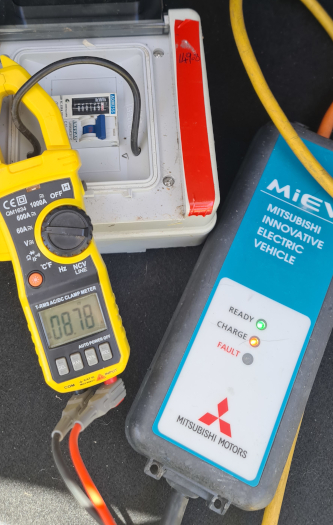
Checking the current draw, seems 8.8 amps is as much as it will pull.
My own PHEV came with 10 and 15 amp chargers, and I have measured them draw around 8 amps and 12 amps, which is 80% of the rated current available from the respective GPOs.
This thing is that they draw 80% of the rated load for hours on end.
Your kettle might draw a similar amount of power, but it doesn’t run for more than a couple of minutes. A bain marie or a compressor might draw a similar load, but cycle in and out.
Standard EV chargers just run full-time at full whack.
You Will Have Problems When The Plug & Socket Aren’t Perfectly Good.
For example, when you plug into a standard indoor type GPO that’s spent 40 years in a carport, there’s some chance it’s got some corrosion on the contacts. 20 minutes to vacuum the car will be no issue, but 8 amps for 6 hours, otherwise expressed as 2kW to charge 16kWh into a PHEV battery, will likely melt the plug and socket. It’s a torture test that will soon find the weak links.
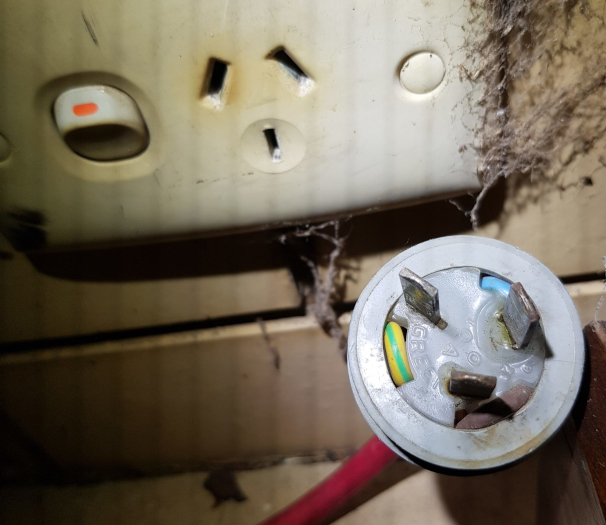
Notice the browning of the wall plate around the left-hand active pin, and the “puddle” of melted plastic around the opposite neutral pin on the plug. This is exactly why you must be vigilant when charging an EV.
The same thing applies to the extension cord you inherited from Dad; the one he might have naughtily made up to plug the 15 amp caravan into a standard 10 amp GPO. It doesn’t have to be dripping in verdigris, but if it isn’t perfectly bright and shiny there’s a good chance you’ll generate some heat that will damage the plug and socket.
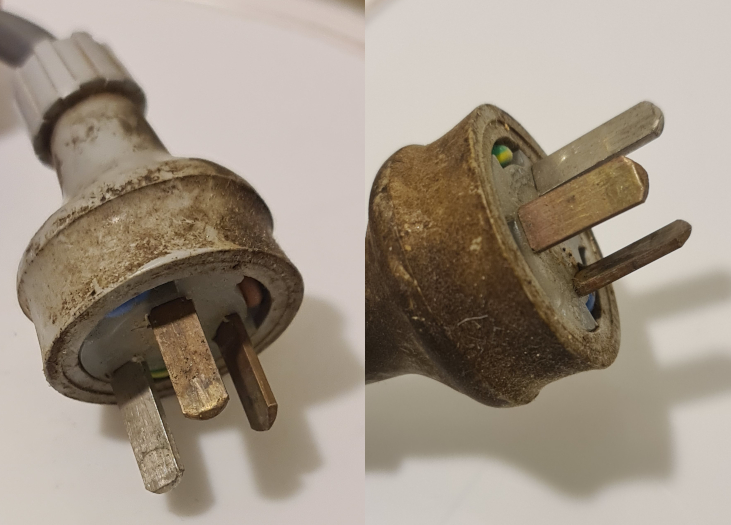
At the very least, this pre-2004 plug must have the pins scuffed, sanded or polished until you have 10mm of shiny bright brass. It will likely cause trouble otherwise.
Always Switch Off The Powerpoint Before Disconnecting
Whenever you use a plug-in car charger, you should turn the switch off at the wall before unplugging the cord. No, really; this isn’t nanny-state hyperbole this time. If the plug or socket has been damaged, the pins may be welded together. Whether it’s still hot or not, the plastic could be melted enough that the plug comes apart in your hand, exposing live metal parts.
So far, I’ve had to replace one plug top, two cord extension sockets and 2 GPO wall plates over five years of charging a car with a standard EVSE. None of them has been what I would call a dangerous situation. I’ve just noticed the plugs were hot to the touch, the plastic was soft and, as a result, discoloured or slightly deformed.
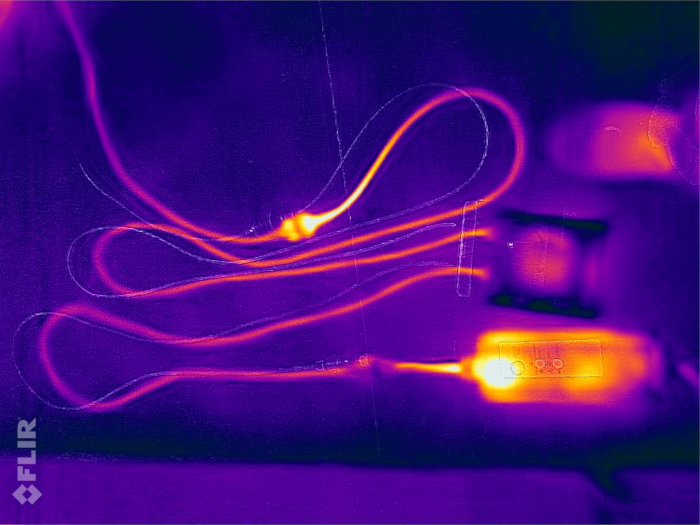
Thermal images show a plug & socket assembly in the middle of this experiment is running comparatively warm.
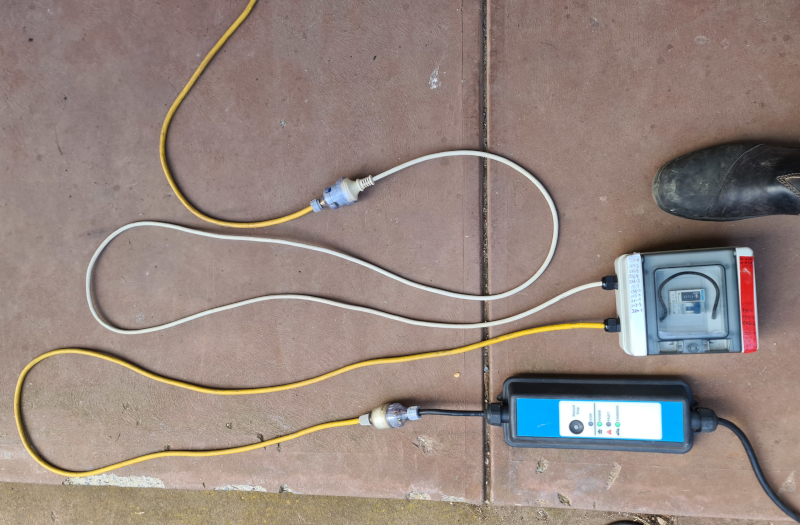
This experiment involves a supply from the top and human foot for temperature reference. The random recycled white appliance lead connects to a breakout box with a kilowatt-hour counter and loop for measuring current. Then the Mitsubishi supplied EVSE at the bottom is connected to the car itself.
Everything Is Rated For A Perfect World, But…
- Household wiring normally uses 2.5mm² cable behind the general power outlet back to the switchboard.
- The so-called “heavy duty” extension cords you buy from Hammerbarn are only 1.5mm².
- Standard household extension cords are as little as 0.75mm².
- These skinny (or excessively long) cords create loss and may overheat if coiled up.
- The losses mount up, especially if you have a shed out the back that was wired for a single GPO piggybacked off the house.
What Else Should You Look Out For?
Be aware that things like powered sites in caravan parks are normally held in contempt by electricians. They’re often poorly maintained and can offer marginal capacity. I have seen first-hand examples that meet the stereotype. They’re old, cruddy and not well-designed in the first place. With the rise of all-electric camping, there will have to be improvements made.
Ironically, PHEVs are quite popular in towing caravans across the UK, and I must relate an amusing story.
In England, etiquette, like queuing, is a finely developed art. So it seems the poms have decided it’s bad form to “pump fuel” out of the caravan park into your car, so they plug the van into the mains riser with a cord, then run a second cord out of the van to charge the car. Apparently, the physics of adding a dozen connections, potential points of failure, or maybe an electrical fire isn’t as important as saving face in a budget holiday park. People are ludicrous.
EV Charging For Renters
- If you plan to use an extension cord, the best approach is to get an electrician to make one. That way, you have new contacts and a cord that’s just the length you need using 2.5mm² cable.
- While you’re at it, have them install a new, good-quality wall plate for the GPO you intend to use.
- Apply a small amount of preservative to the plug, such as Inox or the heavier Lanox to prevent corrosion.
- It should go without saying that double adaptors and power boards should not be used at all.
Regular Powerpoint Charging Is Best With A Dedicated Circuit.
If you intend to use your standard plug-in EV charger regularly, then it’s worthwhile having a proper circuit run from your switchboard with an industrial-style IP-rated plug and GPO. These are weatherproof, so they can be installed outdoors, but I still wouldn’t recommend anything electrical be installed in the driving rain or blazing sun.
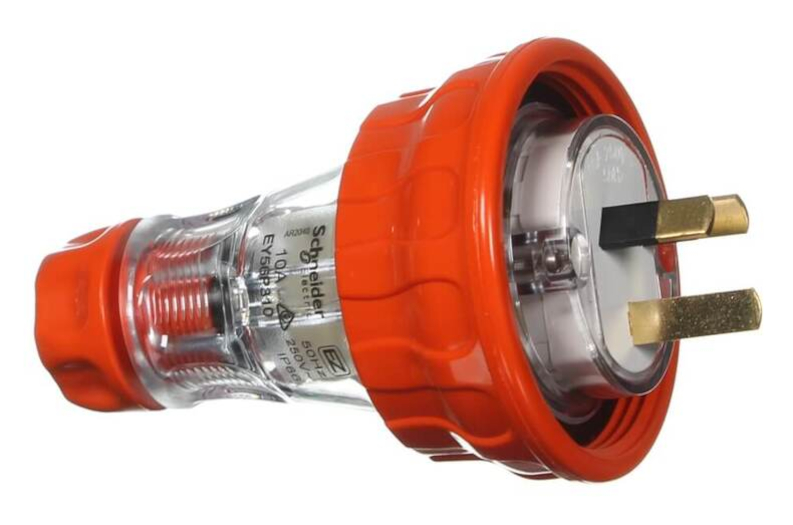
Not only is this plug sealed with an “O” ring to make it weatherproof to IP66, the screw collar means it can’t be withdrawn inadvertently.
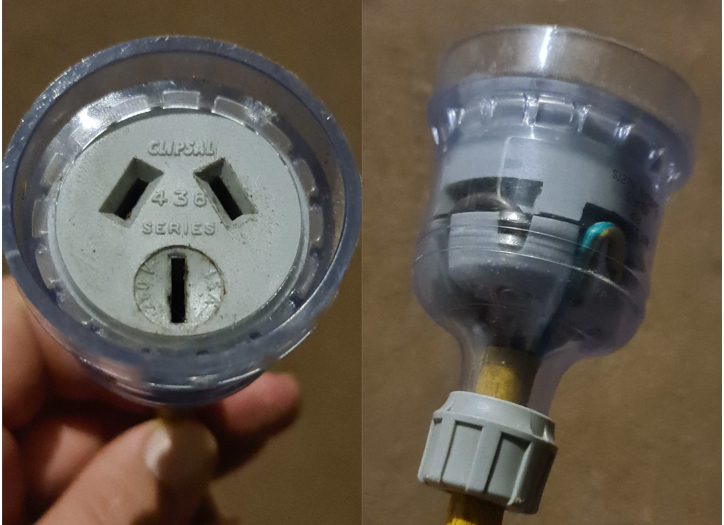
If you install a screwed connector to your EVSE/brick, it will still mate with a standard GPO or cord extension socket like this 15 amp one.
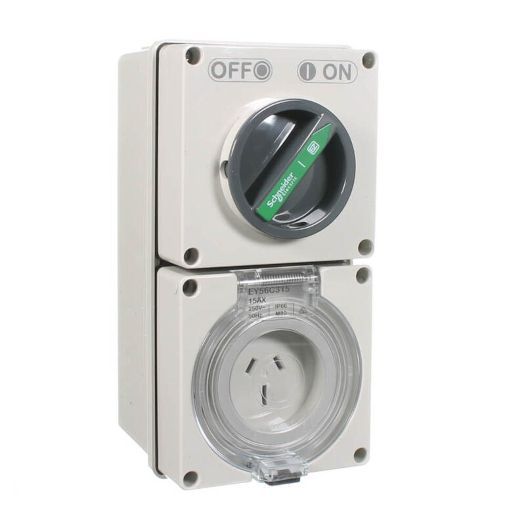
This is the matching 15 amp socket outlet for a screwed connector. They will still accept garden variety appliance leads but probably not a plug pack for your Christmas lights.
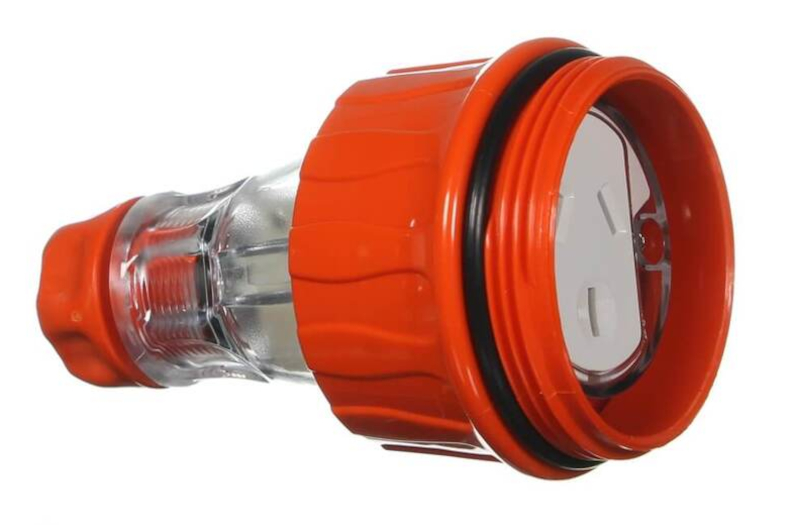
This socket is how extension cords are done right.
Run A Data Cable While You’re At It.
Running a Cat6 data cable or two alongside the new supply is also highly recommended. This allows a reliable hard-wired internet connection for a charger. As we progress there may be a call for DNSP control of EV charging, just like they already do with solar generation and air conditioning demand response to help maintain stability on stinking hot afternoons and mild spring days alike. An internet connected charger also opens up the possibility of charging coordinated with dynamic tariffs like Amber.
Solar Smart Charging With A Mobile Connector
If you are installing a dedicated circuit, you could get some basic solar-smart automation done at the same time. Using a solar diverter such as a CatchPower relay, it’s easy to control the EV circuit so it only uses excess solar energy generation or off-peak rates if you have TOU metering.
Bear in mind the cost of cable is negligible compared to the labour involved with crawling through the roof, so specify at least a 6mm² cable (in single or 3 phase if you have it). That allows a nominal 7 or 22kW charger to be added easily if the need arises.
Solar-Smart Charging Without Extra Hardware
If you only charge Tesla EVs and have a solar inverter on this list, you can do solar-smart charging with a dumb charger without paying for any extra hardware or wiring, via the ChargeHQ app. This is possible because the app can control charging by talking to the car, not the charger. I’m not aware of any other electric car brands that offer this.
We’re Dealing With Serious, Sustained Power Draw
At the end of the day, EVs will push the rated capacity of the wiring in your house, the connection to the street and the grid more broadly. That’s not to say we will overload everything and there will be mass blackouts and a war on the weekend. That would be useless dumb hyperbole, when in actual fact, EVs will help with the transition away from fossil fuels.
We need to remember that when you plug in a car, it will pull a significant amount of power from the wall. Until now, few commonly available appliances pull power as hard and fast as an EV. So, make sure everything is up to snuff or, if you don’t want to worry about it, bite the bullet and get a dedicated circuit and wall box charger.
Learn more about electric vehicle chargers in SQ’s EV Charging 101 guide.
Original Source: https://www.solarquotes.com.au/blog/ev-charging-power-outlet/




